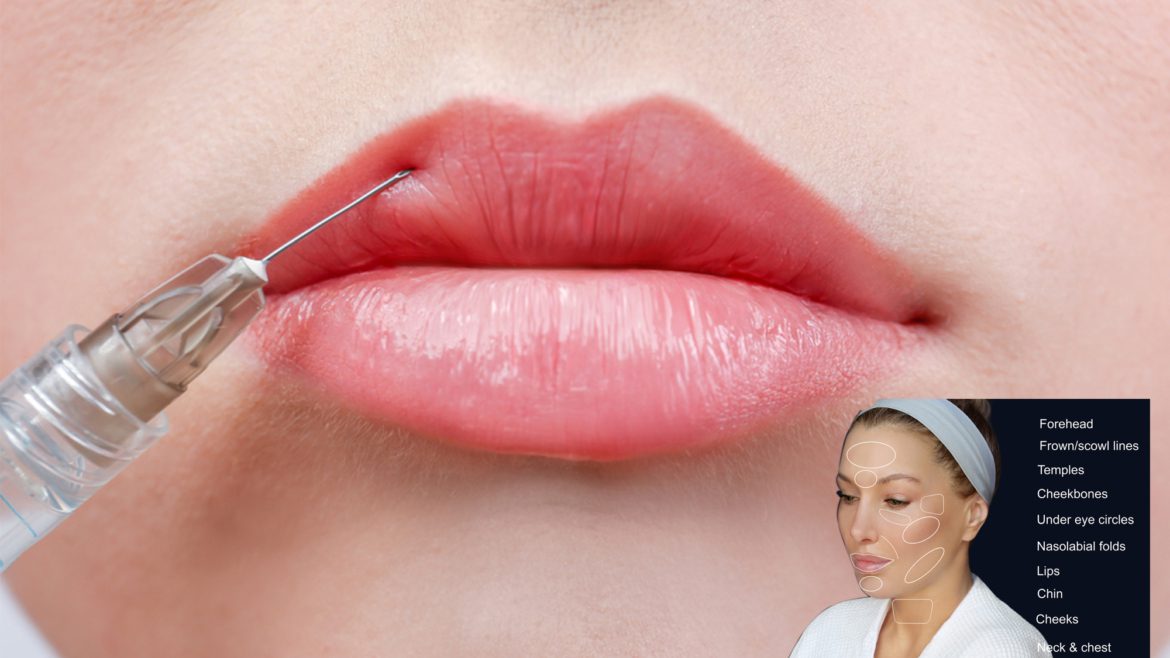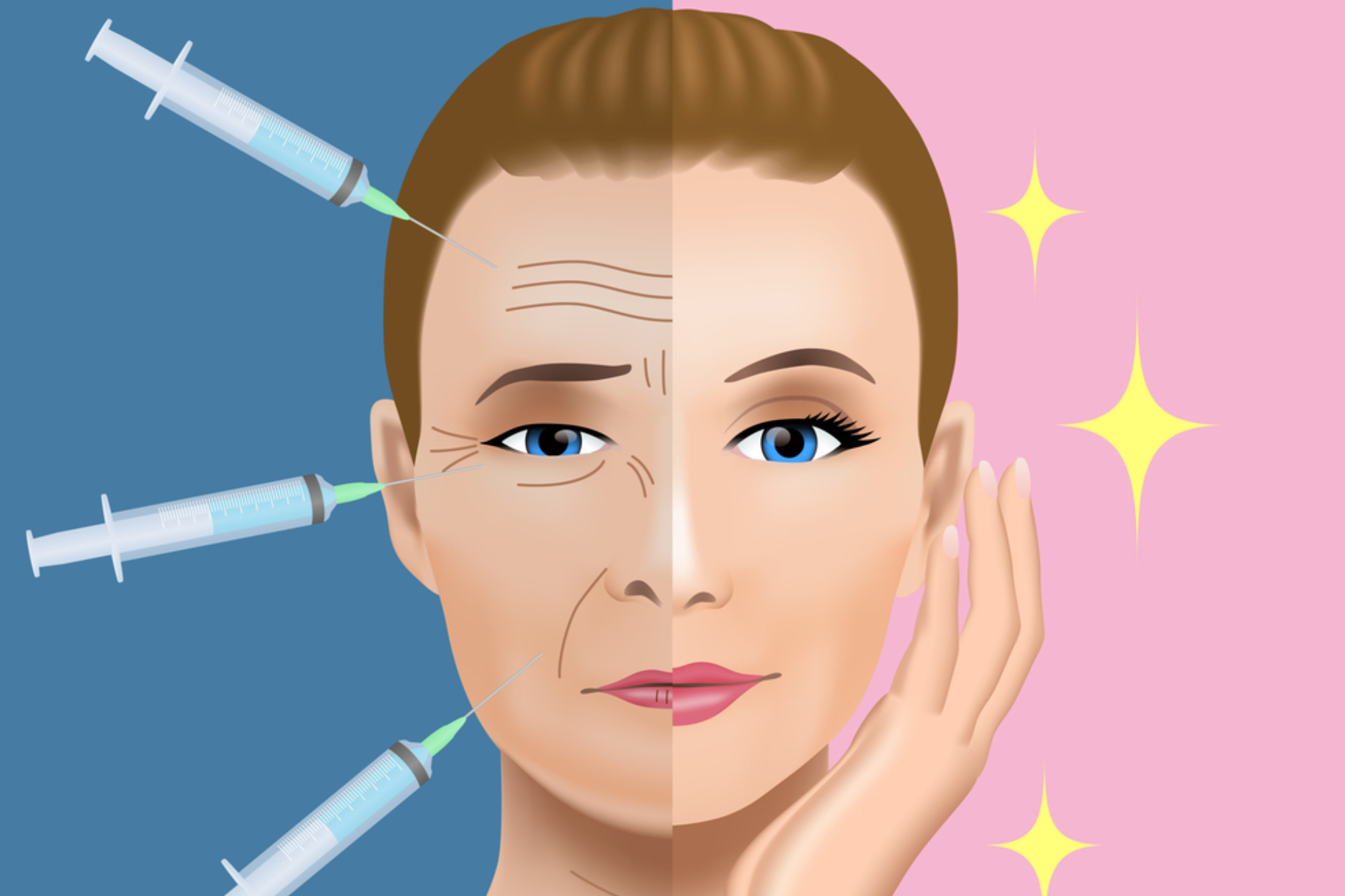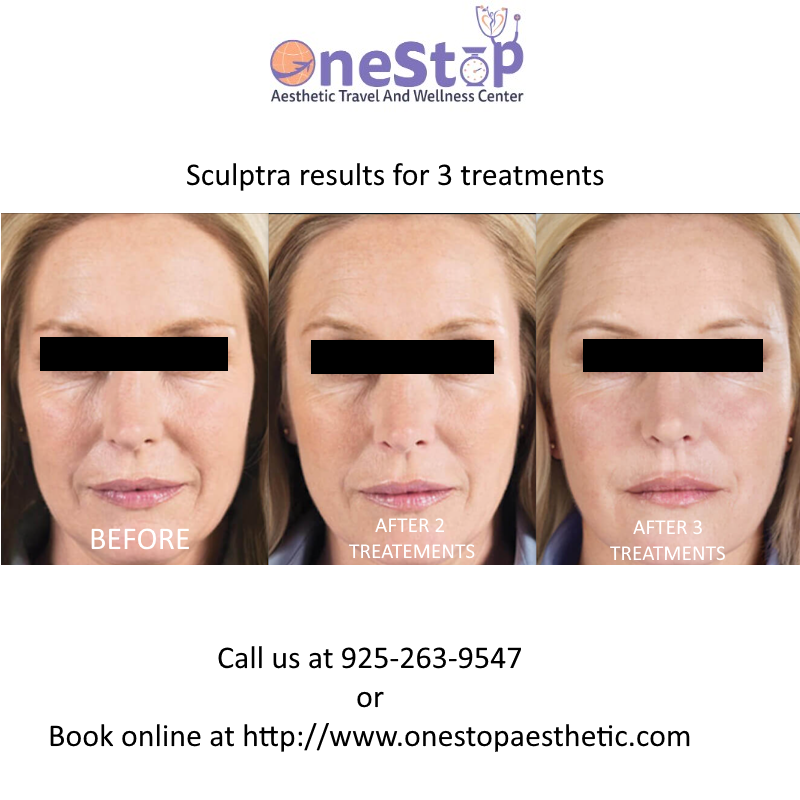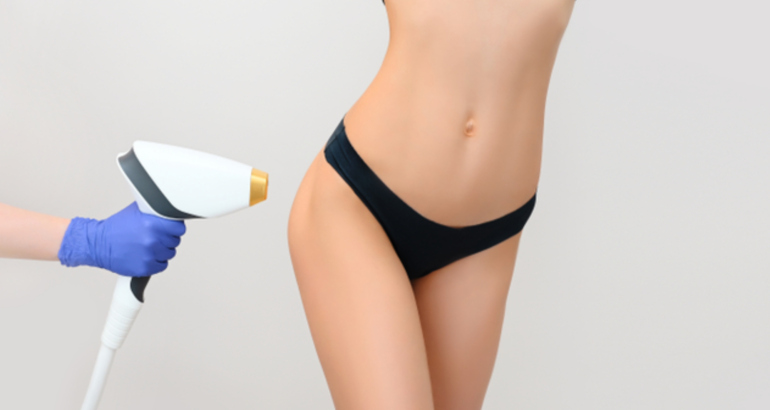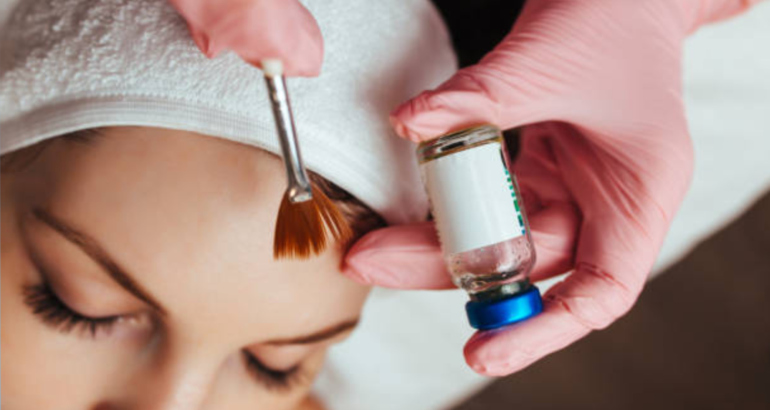Below are some of the most common fillers available in the market.
Juvederm Ultra XC and Ultra XC Plus
A hyaluronic acid-based filler that treats wrinkles and folds. Juvederm offers various products, such as Juvederm Ultra and Juvederm Ultra Plus, that treat moderate to severe facial wrinkles and folds well. Juvederm Ultra is suitable for lip augmentation and can enhance lip volume for a plump and youthful look.
Juvederm Voluma
Part of the Juvederm family, Voluma is designed to add volume and contour to the cheeks. Specifically designed for adding volume to the cheeks, Juvederm Voluma is one of the most widely used fillers for cheek augmentation.
Juvederm Volbella
Volbella is used for lip augmentation and treating perioral (smoker’s) lines. Specifically designed for lip augmentation and treating perioral lines (smoker’s lines), Juvederm Volbella provides subtle and natural-looking results.
Juvederm Vollure
Juvederm Vollure is used to treat moderate to severe facial wrinkles and folds.
Restylane
Restylane is another hyaluronic acid-based filler that addresses facial wrinkles and folds and can be used for lip enhancement. Restylane products, like Restylane Lyft and Restylane Defyne, are used to smooth facial wrinkles and folds, including nasolabial folds and marionette lines.
Restylane Lyft
Restylane Lyft is another hyaluronic acid filler frequently used to lift and contour the cheeks, addressing volume loss and enhancing facial harmony.
Restylane Silk
Restylane Silk enhances lip fullness and smooth vertical lip lines, resulting in soft and natural-looking lips.
Restylane Kyss
Restylane Kysse is a newer filler for lip enhancement, providing natural movement and a soft feel.
Sculptra
Scupltra is made from poly-L-lactic acid; Sculptra stimulates collagen production and gradually improves facial volume. Sculptra’s collagen-stimulating properties make it a good option for gradually improving facial volume and reducing wrinkles.
Sculptra is different from other fillers primarily in its composition and mechanism of action. While most dermal fillers, such as those made of hyaluronic acid, provide immediate results by plumping and filling the treatment area, Sculptra works differently to stimulate collagen production over time.
How is Sculptra different than other fillers?
Here are some key differences between Sculptra and other fillers:
- Composition: Sculptra comprises poly-L-lactic acid (PLLA), a biocompatible and biodegradable synthetic material. In contrast, many other fillers, such as hyaluronic acid, contain substances naturally found in the body.
- Mechanism of Action: When injected into the skin, Sculptra stimulates the body’s natural collagen production. Collagen is a crucial protein that maintains the skin’s structure and firmness. As Sculptra gradually stimulates collagen synthesis, the treated area experiences a gradual increase in volume and a reduction in wrinkles and lines.
- Longevity: Sculptra’s results are not immediate like traditional fillers. It typically takes several weeks to see noticeable improvements as collagen production is stimulated. However, the effects of Sculptra can last longer than many other fillers, often up to two years or more.
- Number of Sessions: Achieving optimal results with Sculptra usually requires multiple treatment sessions several weeks apart. This allows the collagen-building process to unfold gradually.
- Areas of Application: Sculptra is often used for more extensive facial rejuvenation, addressing volume loss in larger areas such as cheeks, temples, and jawline. It may also be used for improving facial wrinkles and folds.
- Natural-Looking Results: Since Sculptra’s results develop over time, the outcome tends to appear more natural, as it doesn’t create a sudden, dramatic change in appearance.
It’s important to note that the choice between Sculptra and other fillers depends on individual needs and treatment goals. Sculptra may be preferred for those seeking a gradual and long-lasting facial volume and contour improvement. On the other hand, traditional fillers like hyaluronic acid fillers might be more suitable for those who desire immediate results and more targeted, localized treatment.
Each filler has its own specific characteristics and is suitable for different purposes and areas of the face. It’s essential to consult with a qualified and experienced medical professional to determine the most appropriate filler for your individual needs and goals.
What are dermal fillers, and how do I use them? Are they safe?
Hyaluronic Acid, a naturally occurring material in our bodies that declines with age, is the major component of dermal fillers. They’re used to instantly restore facial volume and reduce wrinkles for a more youthful look. Because hyaluronic acid is found naturally in the body, it is very safe, with little interactions or allergic reactions.
Your body progressively reabsorbs these products after treatment, and the effects disappear gracefully. Depending on the thickness of the filler and where it is applied, the results can last anywhere from 3 months to 2 years. Maintenance treatments may be necessary to sustain the desired outcome over time.
What areas can dermal fillers be used to treat?
Dermal fillers often address moderate to severe wrinkles, folds, and lines on the face.
What are the potential side effects of dermal fillers?
Most of these fillers are well-tolerated, but common side effects may include swelling, bruising, redness, tenderness, infection, and edemas at the injection site. While most adverse reactions are minor and transient, more serious side effects are possible.
- Allergic reactions: While rare, some individuals may be allergic to certain filler components. In the case of an allergic reaction to the filler material, antihistamines and corticosteroids may be administered to manage the allergic response. Please consult the doctor if you see this issue after your filler treatment.
- Nodules or lumps: Occasionally, small or nodules may form under the skin, which can be massaged or treated if necessary.
- Asymmetry: Uneven filler distribution can lead to asymmetrical results, which can often be corrected. If an uneven distribution of filler results in asymmetry, the healthcare provider may use massage, additional filler, or dissolving agents to correct the imbalance.
- Granulomas: In rare cases, the body may form granulomas in response to the filler material. In the case of dermal fillers, most commonly hyaluronic acid fillers, granulomas can form due to a delayed hypersensitivity reaction to the filler substance. These reactions might not occur immediately but could emerge weeks or months after the filler injection. Granulomas can present as small, firm, or tender nodules under the skin at the injection site. Granulomas, a rare complication, may be managed with corticosteroid injections or other treatments to reduce inflammation and promote resolution.
- Vascular complications: In extremely rare cases, there may be complications related to the inadvertent injection of filler into blood vessels, causing vascular compromise. Immediate intervention may be required to mitigate the issue, such as using hyaluronidase (an enzyme that breaks down hyaluronic acid fillers) or other treatments.
Which dermal fillers are the most effective?
Each patient is unique. Regarding facial rejuvenation, there is no such thing as a one-size-fits-all solution. Dermal fillers are the same way. When deciding which dermal fillers suit you, your medical history, medications, facial structure, and skin condition are all considered.
Types of fillers
Cheek Fillers
cheek fillers are dermal fillers injected into the cheeks to define the scarcely noticeable cheekbones. They provide volume to the area around your cheekbones. This gives the appearance of higher cheekbones. Fillers for the cheeks They also reduce the appearance of wrinkles and fine lines. You won’t need to use makeup to contour your cheekbones if you do it this way. Your self-assurance will soar. Furthermore, your lovely cheekbones will be noticed by everyone. The most commonly used dermal fillers for cheek augmentation are made of hyaluronic acid, a naturally occurring substance in the body that attracts and retains water, providing plumpness and hydration to the skin.
What is the process?
During the cheek filler procedure, a qualified medical professional, like an Aesthetic trained doctor, nurse or nurse practitioner, will carefully assess the patient’s facial anatomy and discuss the desired outcome. The treatment is usually performed in a medical office or clinic setting and typically involves the following steps:
- Preparation: The patient’s skin is cleansed and prepped for the procedure.
- Numbing: In some cases, a topical anesthetic or local anesthesia may be applied to the treatment area to minimize discomfort during the injections.
- Injection: Using a fine needle or cannula, the filler substance is injected strategically into specific areas of the cheeks to add volume and contour. The injection technique is vital to achieving a natural and harmonious result.
- Massaging: The injected filler may be gently massaged to ensure even distribution and to achieve the desired shape.
Lip Fillers
As you get older, your lips thin down and bend inward. Lip fillers add volume and definition to your lips, making you look younger and fresher.
Applying lip filler, also known as lip augmentation, involves several steps and is typically performed by a qualified medical professional, such as an Aesthetic trained doctor or trained injector. The procedure is designed to enhance the size and shape of the lips using injectable dermal fillers, most commonly made of hyaluronic acid.
What is the process?
Here’s an overview of the typical process for applying lip filler:
- Consultation: Before the procedure, you will consult the doctor performing the treatment. During this consultation, you will discuss your goals, expectations, and any concerns you may have. The healthcare provider will assess your lips’ anatomy and recommend the most appropriate filler and treatment plan based on your individual needs.
- Preparation: On the day of the procedure, the medical professional will cleanse the treatment area and may apply a topical numbing cream to minimize any discomfort during the injections.
- Injection: Once the numbing cream has taken effect, the medical professional will use a fine needle or cannula to inject the lip filler into specific areas of the lips. The injection technique will be precise, aiming to achieve the desired lip shape and volume. The filler substance is usually a hyaluronic acid-based gel, which adds volume and hydration to the lips.
- Sculpting: As the filler is injected, the injector may gently massage and shape the lips to ensure even distribution and a natural result.
- Post-treatment care: After the injections, you may be given some post-treatment care instructions, such as avoiding strenuous activities and not touching or rubbing the lips for a few hours. You may also be advised to avoid certain medications or supplements that could increase the risk of bruising.
- Follow-up: Follow-up appointments may be scheduled to monitor your results and address any concerns or touch-up treatments if necessary.
The lip filler procedure typically takes 30 to 60 minutes, and most patients can return to normal activities shortly after the treatment. Some mild swelling, bruising, or redness at the injection sites is common but usually resolves within a few days.
Nasolabial Folds / Nose-to-Mouth Lines Fillers
These smooth out the nasolabial folds, making the face appear younger and more youthful. Applying filler for nasolabial folds, the lines that run from the sides of the nose to the corners of the mouth, involves a similar process to other facial filler treatments. Nasolabial fold fillers are typically made of hyaluronic acid, which adds volume and smooths out the skin.
What is the process?
Here’s an overview of the process:
- Consultation: Before the procedure, you will have a consultation with a qualified medical professional. During this consultation, you will discuss your concerns and goals regarding the nasolabial folds. The healthcare provider will assess your facial anatomy and recommend the most appropriate filler and treatment plan for your individual needs.
- Preparation: On the day of the procedure, the treatment area will be cleansed, and a topical numbing cream may be applied to reduce any discomfort during the injections.
- Injection: Once the numbing cream has taken effect, the medical professional will use a fine needle or cannula to inject the filler into the targeted areas of the nasolabial folds. The injections will be strategically placed to add volume and smooth the lines.
- Sculpting: As the filler is injected, the medical professional may gently massage and shape the area to achieve a natural and even result.
- Post-treatment care: After the procedure, you will be given some post-treatment care instructions, such as avoiding strenuous activities, not touching or rubbing the treated area, and using cold packs to reduce swelling if necessary.
- Follow-up: Follow-up appointments may be scheduled to assess your results and address any concerns or touch-up treatments if needed.
The nasolabial fold filler procedure typically takes 30 to 60 minutes, and most patients can resume their normal activities shortly after the treatment. There may be some mild swelling, bruising, or redness at the injection sites, but these effects usually resolve within a few days.
Marionette Line fillers
These fillers smooth out wrinkles around the angle of the mouth, particularly the Marionette Lines that droop down from the angle of the mouth to the chin. Applying this filler is very similar to cheek or lip filler. It takes 30 to 60 minutes to apply filler on Marionette lines.
Cheek Filler Before and After
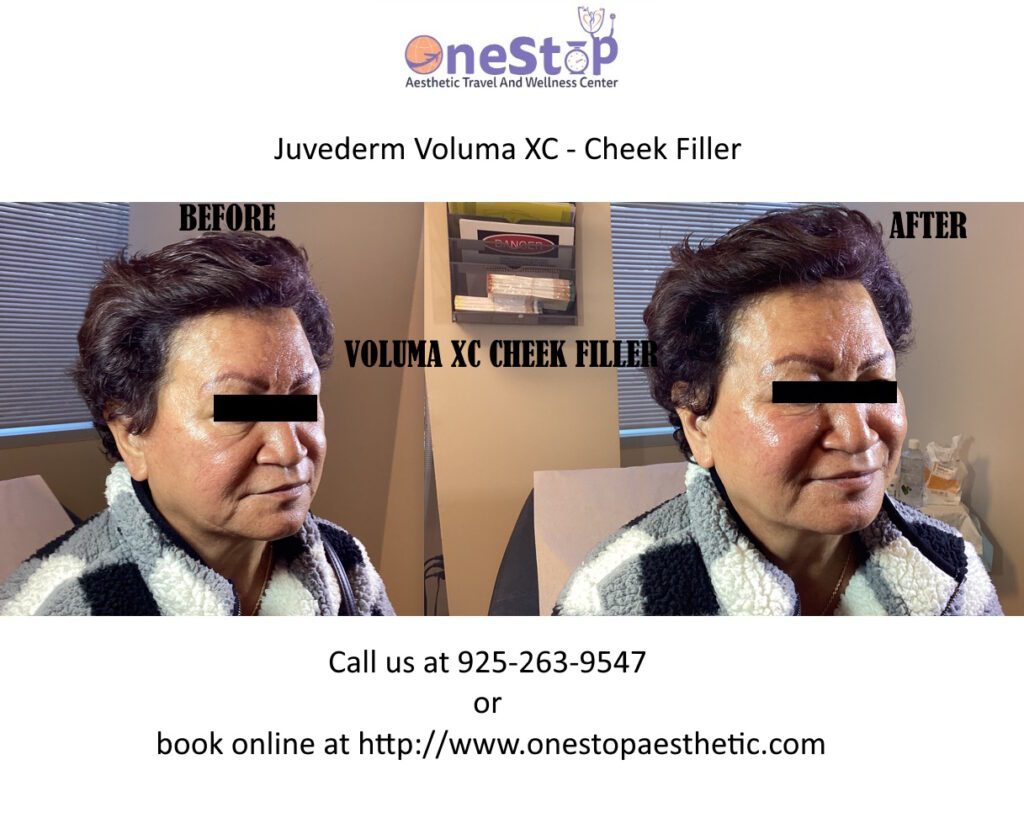
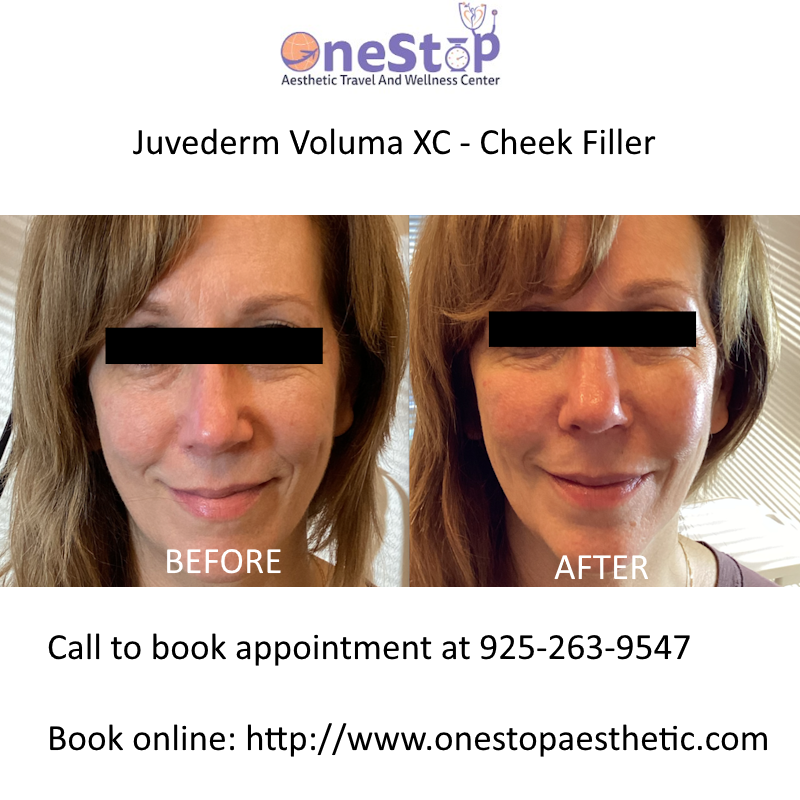

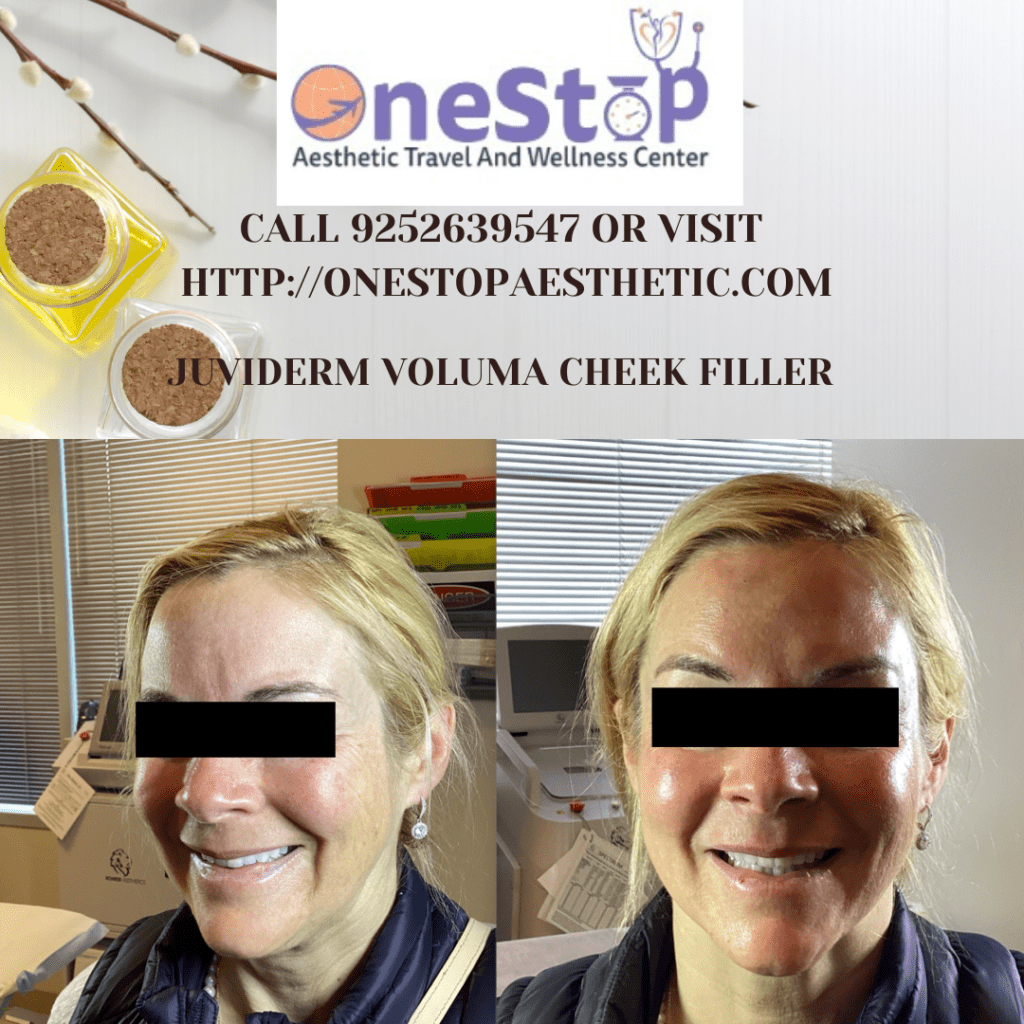
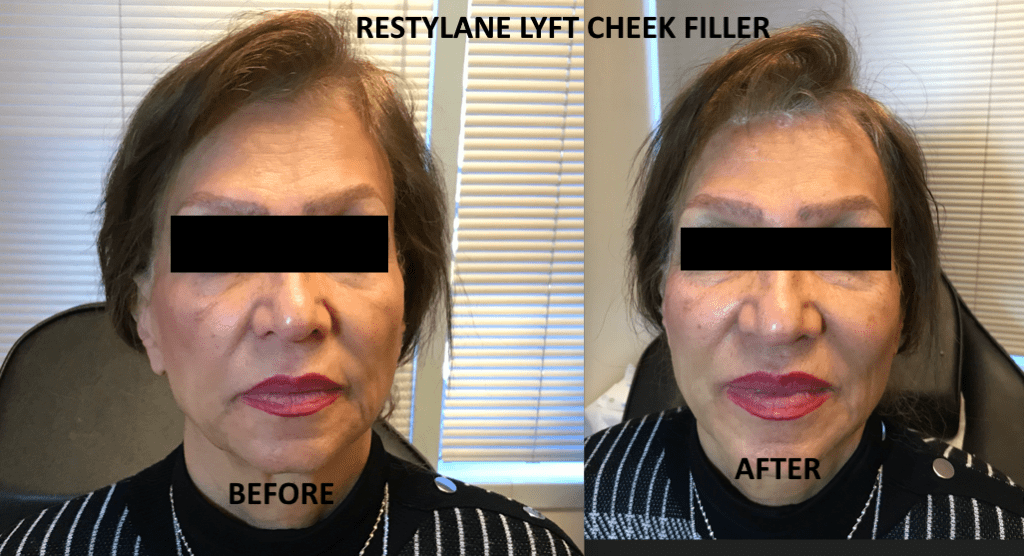
Lip Filler Before and After
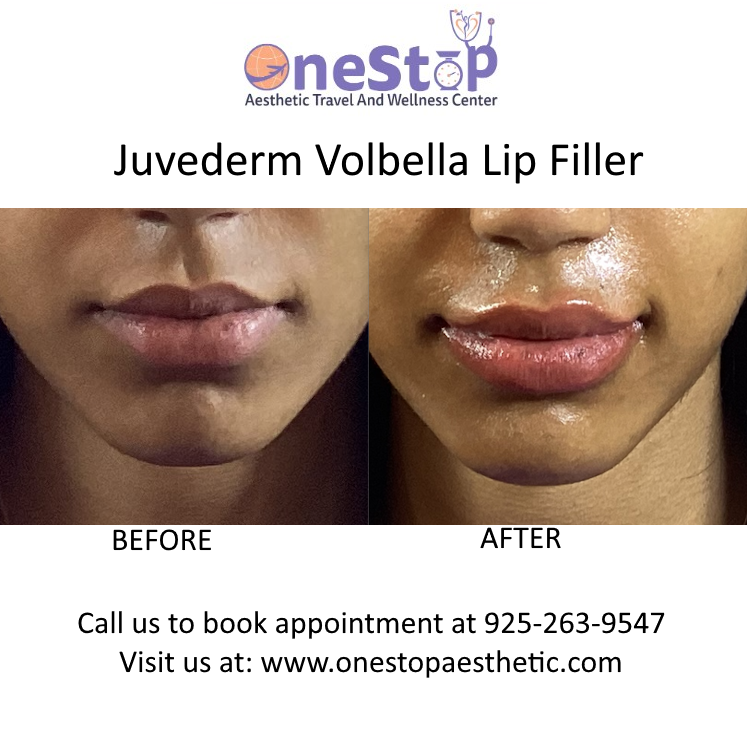

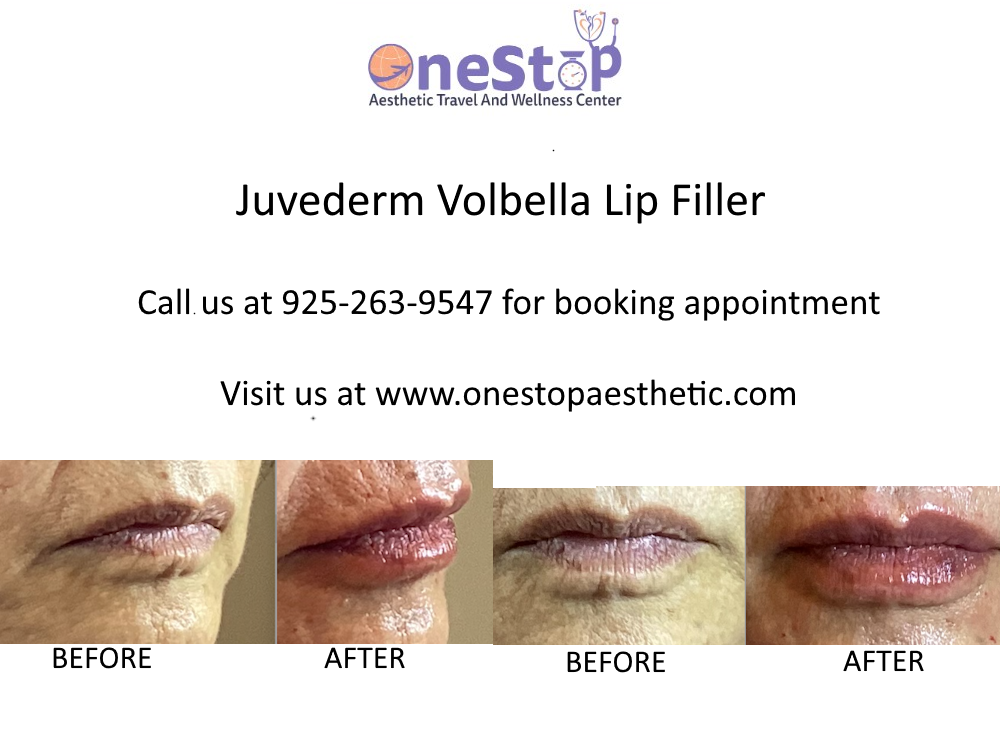
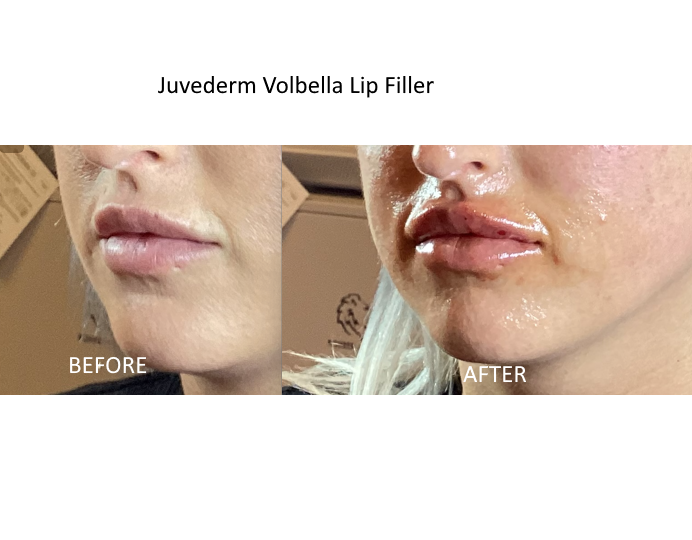
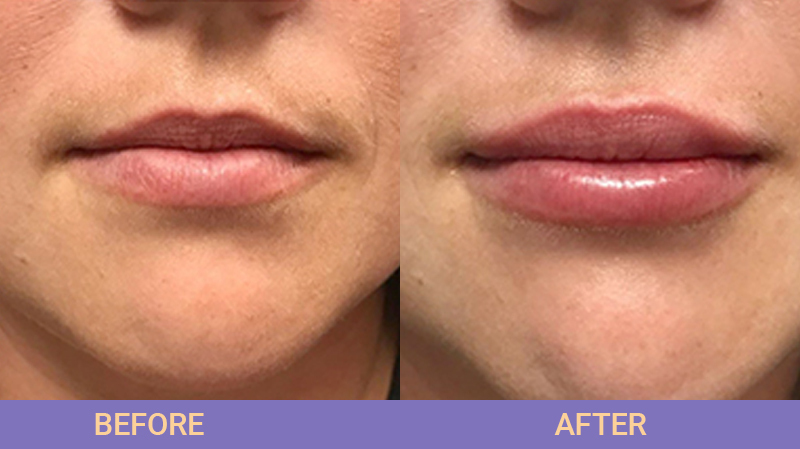
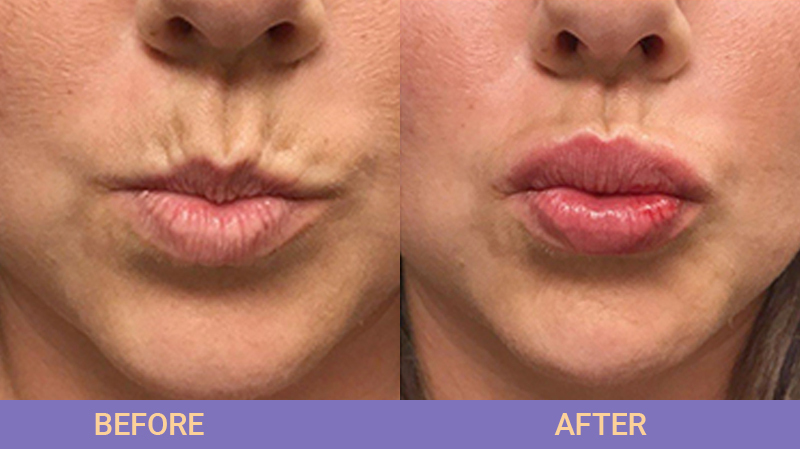
Nasolabial and Marionette Lines Filler Before and After
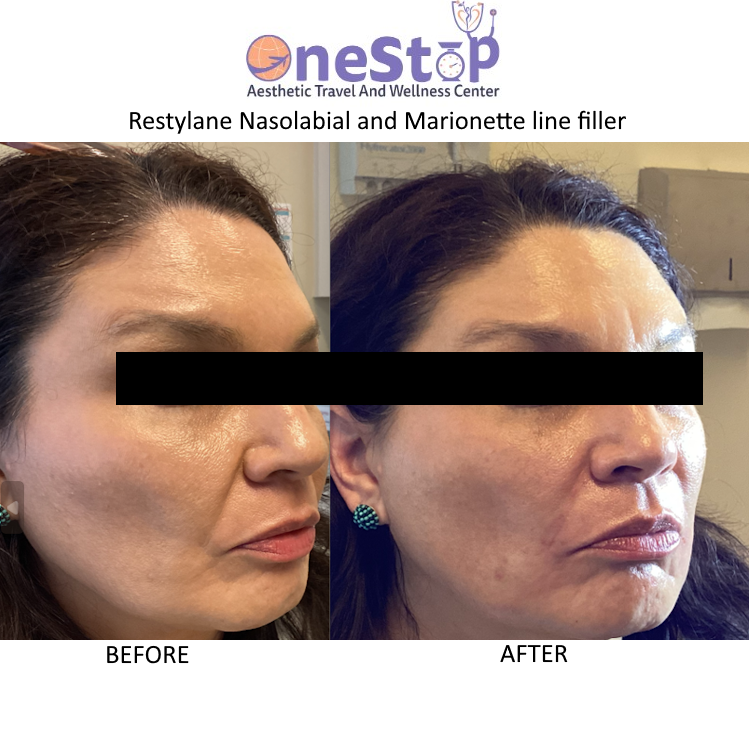
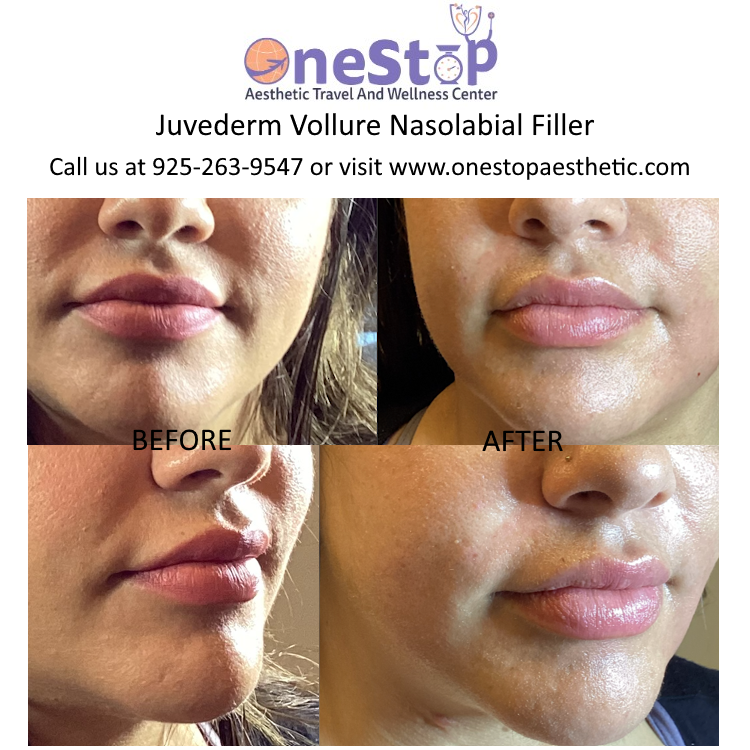
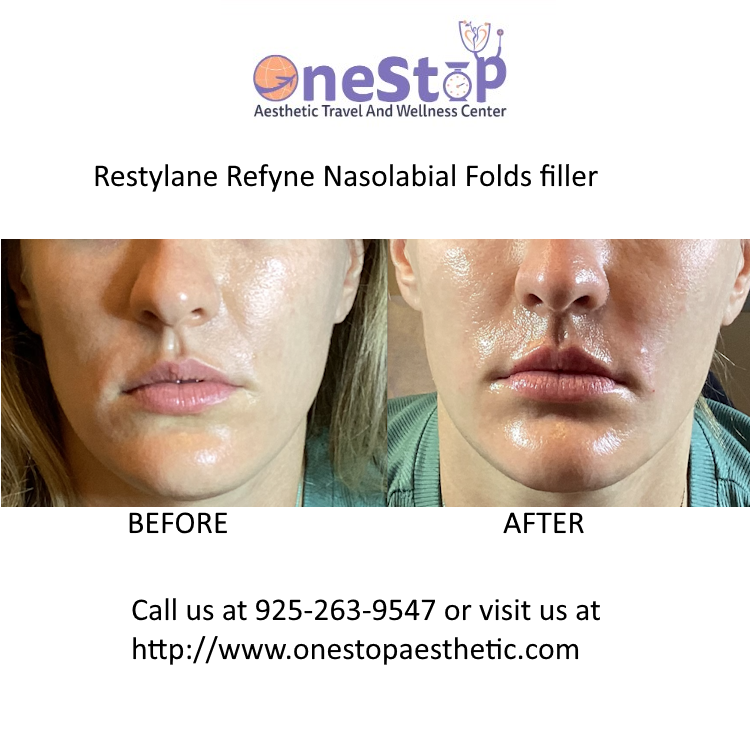

Sculptra Before and After three treatments
Where can I get the price and book appointments for dermal fillers?
You can check our competitive prices and book an appointment online by visiting this page.
What other Medical Spa treatments do you provide?
You can look at the list of all Medical Spa treatments by visiting this page.

